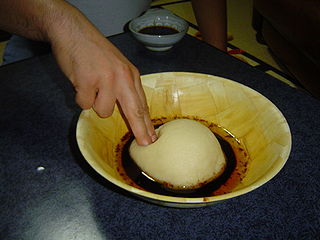
Libya, officially the State of Libya, is a country in the Maghreb region of North Africa. Libya borders the Mediterranean Sea to the north, Egypt to the east, Sudan to the southeast, Chad to the south, Niger to the southwest, Algeria to the west, and Tunisia to the northwest. Libya comprises three historical regions: Tripolitania, Fezzan, and Cyrenaica. With an area of almost 1.8 million km2 (700,000 sq mi), it is the fourth-largest country in Africa and the Arab world, and the 16th-largest in the world. Libya claims 32,000 square kilometers of southeastern Algeria, south of the Libyan town of Ghat. The country's official religion is Islam, with 96.6% of the Libyan population being Sunni Muslims. The official language of Libya is Arabic, with vernacular Libyan Arabic being spoken most widely. The majority of Libya's population is Arab. The largest city and capital, Tripoli, is located in northwestern Libya and contains over a million of Libya's seven million people.

William Alton Carter was an American farmer, businessman, brewer, and politician. The younger brother of U.S. President Jimmy Carter, he promoted Billy Beer and Peanut Lolita; and he was a candidate for mayor of Plains, Georgia.

A throwing knife is a knife that is specially designed and weighted so that it can be thrown effectively. They are a distinct category from ordinary knives.

Merneptah or Merenptah was the fourth pharaoh of the Nineteenth Dynasty of Ancient Egypt. He ruled Egypt for almost ten years, from late July or early August 1213 BC until his death on 2 May 1203 BC, according to contemporary historical records. He was the first royal-born pharaoh since Tutankhamun of the Eighteenth Dynasty.

During the Iron Age and classical antiquity, Libya referred to modern-day Africa west of the Nile river. Greek and Roman geographers placed the dividing line between Libya/Africa and Asia at the Nile.

Christianity is a minority religion in Libya. It has been present in Tripolitania and Cyrenaica since Roman times.

Tourism in Libya is an industry heavily hit by the Libyan Civil War. Before the war tourism was developing, with 149,000 tourists visiting Libya in 2004, rising to 180,000 in 2007, although this still only contributed less than 1% of the country's GDP. There were 1,000,000 day visitors in the same year. The country is best known for its ancient Greek and Roman ruins and Sahara desert landscapes.

The cuisine of Libya is a mix of Berber, Arab and Mediterranean cuisines with Ottoman and Italian influence. One of the most popular Libyan dishes is bazin, an unleavened bread prepared with barley, water and salt. Bazin is prepared by boiling barley flour in water and then beating it to create a dough using a magraf, which is a unique stick designed for this purpose.

The Red Castle Museum, also known as As-saraya Al-hamra Museum, the Archaeological Museum of Tripoli or Jamahiriya Museum, is a national museum in Libya. It is located in the historic building known as the Red Castle of Tripoli, sometimes also referred to as Red Saraya, on the promontory above and adjacent to the old-town district with medina Ghadema.

The Martyrs' Square ; known as Green Square under the Gaddafi government; Independence Square during the monarchy; and originally known as Piazza Italia is a downtown landmark at the bay in the city of Tripoli, Libya. The main commercial center of the city surrounds the square. The Square is also a main tourist attraction in Tripoli. It has a large legendary fountain done by an Italian architect at the centre of the square. The square is the meeting point of many different avenues. Omar Mukhtar Avenue is one of the longest in North Africa, it was built by Italians in the colonial time, and Libyans during the era of King Idris I. Independence Street branches from the square too, and it leads to the Palace of King Idris I. 24 December Avenue is also an Italian built avenue. Mizran Street is the last street that branches from the Martyrs' Square.
The Islamic Museum of Tripoli is a proposed museum of Islamic culture that was built under the support and patronage of Saif al-Islam Gaddafi in Tripoli, Libya.
The Epigraphy Museum of Tripoli is a museum located in Tripoli, Libya.
The Natural History Museum of Tripoli is a museum located in Tripoli, Libya. It was developed by Professor Zahid Baig Mirza.
The Prehistory Museum of Tripoli is a museum located in Tripoli, Libya.

The Karamanly House Museum is a historic house and museum located in the Old city in Tripoli, Libya. It is associated with the Karamanli dynasty.
Apollonia Museum is an archaeological museum located in Susa, Libya. Its collection includes ancient Libyan and Ptolemaic sculptures, funerary art, architectural elements, ceramics, and other household items. The museum houses a lot of history that includes Greek and Latin artifacts.
The Libya women's national football team is the national football team of Libya. It does not have FIFA recognition. It is not ranked by FIFA. There are development plans in the country to improve the state of women's football.











